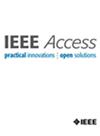Modeling the Error of Caliper Measurements in Animal Experiments
IF 3.4
3区 计算机科学
Q2 COMPUTER SCIENCE, INFORMATION SYSTEMS
引用次数: 0
Abstract
Cancer prevention and treatment is one of the most significant public health challenges of the 21st century. Cancer is a serious health problem, and it is the second leading cause of death following cardiovascular diseases. This requires a reliable virtual patient model, which is usually created based on animal studies that precede human studies. Preclinical drug testing often involves mouse experiments, where tumors are implanted under the skin. Up until now, the most widespread tumor measurement method is caliper measurement, which involves a large measurement error, especially if the tumor is small. We present a noise model that can be used to model the measurement noise in animal experiments where tumor size is measured with calipers. Accurate in silico measurement is essential, as animal studies are costly, time-consuming, and strictly regulated. By incorporating a noise model, in silico experiments can better reflect real-world measurement uncertainties, improving experimental reproducibility and the reliability of virtual patient modeling. In order to model the noise, we use data from preclinical experiments measured using MRI and digital calipers, and we use a nonlinear transformation to whiten the noise. Finally, based on the Anderson-Darling test, we find the distributions that fit the noise best. We show that virtually generated measurements based on the noise model produce similar results to the original measurement noise, thus the noise model can be used to create virtual patients and model realistic experimental setups for in silico experiments.求助全文
约1分钟内获得全文
求助全文
来源期刊

IEEE Access
COMPUTER SCIENCE, INFORMATION SYSTEMSENGIN-ENGINEERING, ELECTRICAL & ELECTRONIC
CiteScore
9.80
自引率
7.70%
发文量
6673
审稿时长
6 weeks
期刊介绍:
IEEE Access® is a multidisciplinary, open access (OA), applications-oriented, all-electronic archival journal that continuously presents the results of original research or development across all of IEEE''s fields of interest.
IEEE Access will publish articles that are of high interest to readers, original, technically correct, and clearly presented. Supported by author publication charges (APC), its hallmarks are a rapid peer review and publication process with open access to all readers. Unlike IEEE''s traditional Transactions or Journals, reviews are "binary", in that reviewers will either Accept or Reject an article in the form it is submitted in order to achieve rapid turnaround. Especially encouraged are submissions on:
Multidisciplinary topics, or applications-oriented articles and negative results that do not fit within the scope of IEEE''s traditional journals.
Practical articles discussing new experiments or measurement techniques, interesting solutions to engineering.
Development of new or improved fabrication or manufacturing techniques.
Reviews or survey articles of new or evolving fields oriented to assist others in understanding the new area.
 求助内容:
求助内容: 应助结果提醒方式:
应助结果提醒方式:


